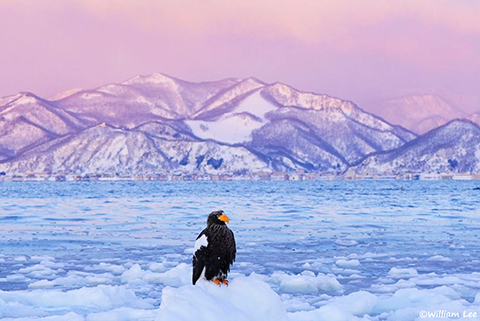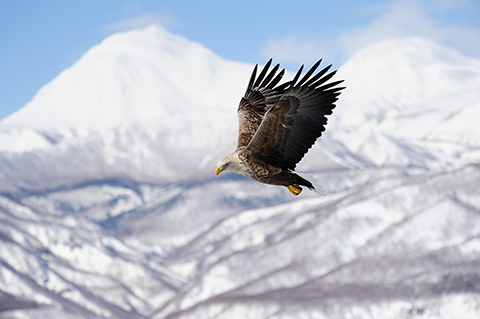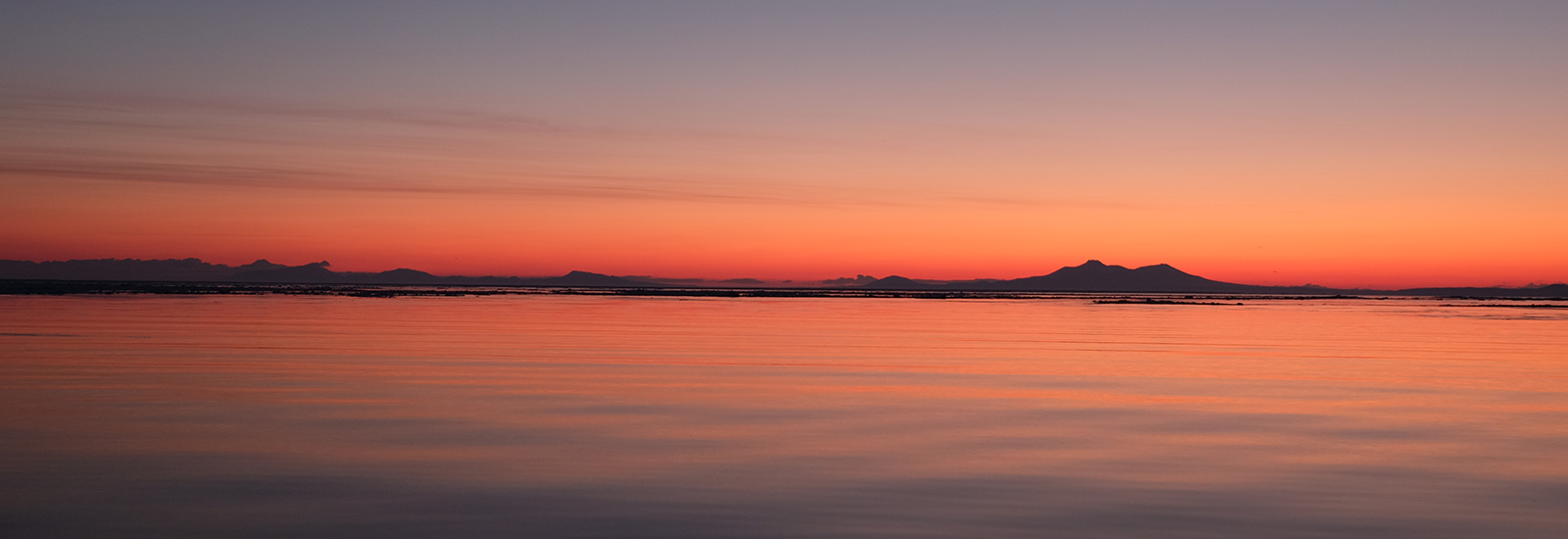
Spring in Rausu is the season when everything comes to life. Impossible encounters with orcas and other forms of wildlife await. After the sea ice has melted, countless krill and small fish appear, which is turn attract flocks of short-tailed shearwater. Large baleen whales such as mink whales also gather in the area. Orcas often appear as a family. Spring is the season in which orca sighting are most frequent. On a whale watching cruise, orca can be observed along with Shiretoko mountains in the background. The lives of many wild animals being in the mountains as the snow melts. As the bears awake from hibernation, they can be seen from small boats. Only 140 Blakiston’s fish owls live in Hokkaido. Approximately half of these inhabit Shiretoko. There is an observation facility in Rausu. The Shiretoko Pass, which is closed during winter, opens at Golden week on middle of May. People can visit Lake Rausu or enjoy Shiretoko’s snow-capped mountains. In the sea, Ezo short-spined sea urchin and salmon fishing takes place. These delicacies can be enjoyed at Shiretoko Biraki Festival.
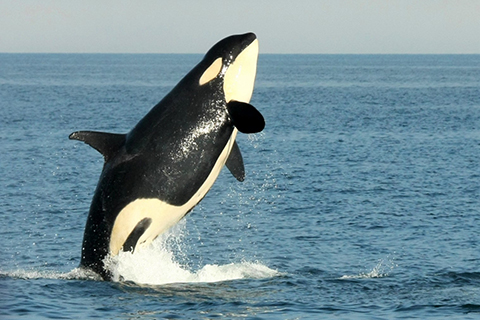
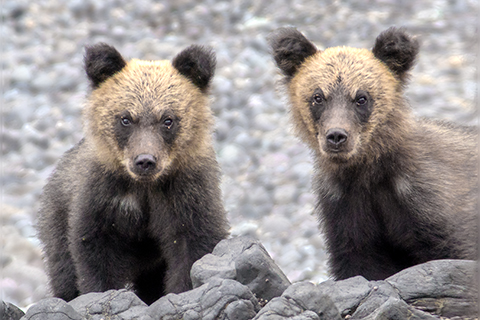

Summer is the season when sperm whales can be observed regularly. See them dive dynamically and hear the sound of the blow at close range. Whales can be observed from the land in Rausu, which faces the narrow and deep Nemuro Strait. Summer is also the best season to encounter of Dall’s porpoises. Kelp (Rausu Kombu) harvesting is a symbol of summer in Rausu. Eco-tours now take place to observe the history of kelp harvesting that once thrived on Cape Shiretoko. While visiting the oldest fisherman’s hut on Shiretoko, participants come into contact with the lifestyles of fisherman then and now. The Shiretoko mountains enrich the sea of Rausu. Mt. Rausu, one of Japan’s “top 100 peaks”, is for more experienced climbers. At Lake Rausu, trekking can be enjoyed by novices. Enjoy the Shiretoko summer by means of sea kayaking or fishing using small boats that carry to and from fishing sites. As the summer draws to an end, pink-and chum salmon return. The activities of those involved in the fishing industry gradually increase.
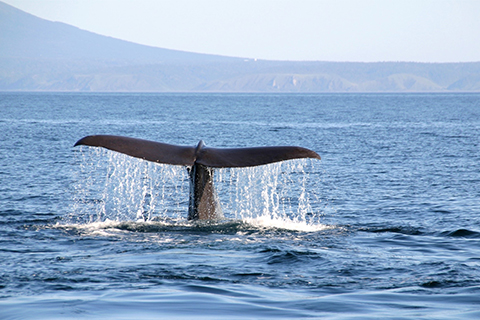
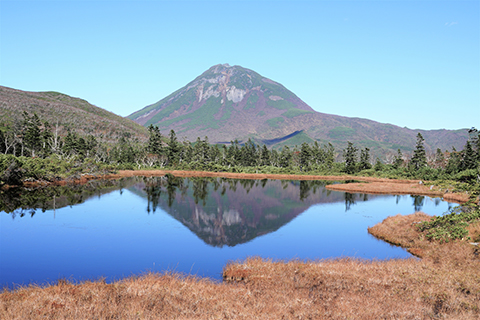

Autumn is the season in which the harbors of Rausu are at their busiest. Salmon fishing takes place at night. The boats return to the harbor to land the catches before dawn. Visitors can see fisherman bringing in their catches and view auctions at the harbor. Squid fishing boats gather in Rausu from all around Japan. The sight of many boats leaving the harbor together is something not to be missed. The streams are the places that link the mountains with the sea. Many salmon return upstream, providing the bears with a valuable source of food. Dolly varden trout in the streams also help to support the families of Blakiston’s fish owls. These fish, which are usually found at altitude, can be seen near the sea in Shiretoko. In early autumn, when the blessings from the sea are at their peak, the Isaribi Festival is held. Delicious cuisine and attractions such as a salmon auction entice countless visitors each year. The morning glow becomes most beautiful in Autumn, as the air is clear and crisp. Sperm whales can be seen diving dynamically in September. The leaves change to autumn colors in October. Trekking to Lake Rausu can be enjoyed until the Shiretoko Pass closes sometime in November. In late autumn, Steller’s sea lions migrate to the Shiretoko coast. Tours are held to observe the sea lions.
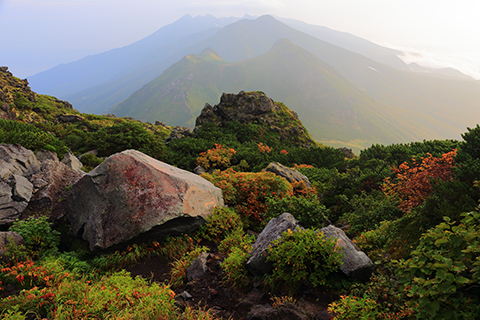
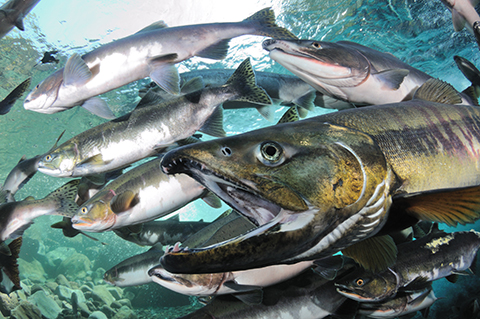

Rausu is the most southerly port in the Northern Hemisphere to be covered by ice. Many wild animals gather in and around the sea of Rausu. Rausu’s fishing industry continues in winter. Fish and shellfish such as Alaska pollock and Ezo short-spined sea urchin are highly appraised around the world. In the harsh mid-winter, many Steller’s sea eagles and white-tailed sea eagles congregate in Rausu. In mid-February, as the northwesterly winds bring the sea ice, the distance to the eagles is suddenly shortened. The morning sun rising above Kunashiri Islamd in the Northern Territories. Sea ice shining blue in the afternoon light. The awesome view of action and stillness from a cruise boat. You may even see a seal and its cub resting on an ice floe. New life exists beneath the sea ice, too. The forests of Rausu kombu(kelp) become cradles for the fish. The large differences in temperature between summer and winter help create Rausu’s fertile sea. As the sea ice melts, abundant nourishment remains. A new season begins amid this continuous cycle of life.
